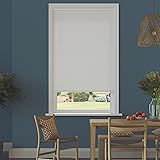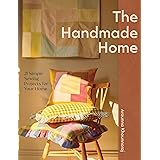Every homeowner or renter dreams of a beautiful, functional living space. Yet, achieving that dream can often feel like navigating a minefield of potential design missteps. As the engaging discussion in the video above highlights, even experienced decorators can find simple home decor mistakes lurking in their own homes. These aren’t always grand, elaborate errors. Sometimes, the most common issues are the easiest to overlook, quietly undermining your home’s aesthetic and functionality.
The good news? Most of these everyday decorating blunders come with surprisingly simple fixes. Identifying them is the first step toward transforming your space from merely “lived-in” to truly “loved.” Let’s dive deeper into some of the most pervasive common decorating errors and explore practical solutions that can elevate your home’s appeal without extensive renovations or a hefty budget.
Avoiding Wall Damage: The Peril of “Removable” Adhesives
Many of us reach for temporary adhesive products with the best intentions. They promise easy hanging, no holes, and a clean removal. Imagine a scenario where you’re decorating for a party or a child’s room, thinking these strips or hooks are the perfect, non-committal solution. You stick up a cloud-shaped key holder or a lightweight piece of art, confident you’re preserving your walls.
However, as the video’s hosts discovered firsthand, these “removable” items can be a complete crapshoot. While some might come off without a trace, others can peel away strips of sheetrock or paint, leaving behind permanent damage far worse than a simple nail hole. Repairing these tears often involves spackling, sanding, and repainting – a much larger task than patching a small nail mark.
The solution is straightforward: exercise caution. For items intended to stay up for more than a brief period, consider a small nail or screw. Nail holes are generally easier to repair cleanly than patches of missing sheetrock. If you must use adhesive products, reserve them for very temporary displays, like holiday decorations on glass or mirrors, where surfaces are less prone to damage.
The Undersized Rug: A Common Room Styling Mistake
A rug is more than just a floor covering; it’s a foundational element that defines a space. One of the most common home decor mistakes is choosing a rug that is simply too small for the room. Imagine trying to play “The Floor Is Lava” in your living room, where the rug feels like a small island in a vast ocean of bare flooring. This creates a disconnected and awkward feeling, making the room seem smaller and less cohesive.
Decor magazines sometimes feature “scatter rugs” by design experts, but this look often proves difficult to replicate effectively in a real home environment. A small rug can break up the visual flow and prevent furniture from feeling grounded. The principle is counterintuitive but effective: going as large as possible with your rug actually makes a room feel more expansive and luxurious.
The ideal rug size should allow at least the front two legs of major furniture pieces (like sofas and armchairs) to rest on it. In a dining room, the rug should extend enough so that chairs remain on it even when pulled out. In a bedroom, the rug should span most of the floor, ideally extending beyond the sides of the bed, creating a soft landing space. If a large rug is beyond your budget, consider layering a smaller, decorative rug over a larger, more affordable jute or sisal rug.
The Stark Reality of White Furniture: When Less Isn’t More
White furniture can seem like a clean, versatile choice, especially in a modern aesthetic. However, as the video humorously points out, it often screams “I gave up.” Many white, flat-packed furniture pieces, like the IKEA bookcase mentioned, tend to look inexpensive, particularly when they feature visible adjustment holes or are placed alongside other pieces that aren’t the exact same shade of white. This can create a disjointed and visually unappealing “wall of white.”
White furniture often lacks the warmth, depth, and character that wood tones or even painted colors can provide. It can feel stark, sterile, and unforgiving, highlighting imperfections rather than enhancing the room’s overall design. Think about the difference between a naturally aged wooden chest and a mass-produced white laminate bookshelf. The former has a story; the latter often looks generic.
To avoid this common decorating error, consider furniture in wood tones, blacks, or rich colors. These options often hide manufacturing details better and provide a more sophisticated feel. If you already own white furniture, consider upgrading it. Adding custom doors, applying a new coat of paint in a richer hue, or even swapping out hardware can significantly transform its appearance. Imagine if that white bookcase had beautiful glass doors and integrated lighting; it would instantly look more bespoke and less like an afterthought.
The Unfinished Look: Distressed Paint and Exposed Wires
A home should feel curated and complete, not like a collection of abandoned projects. Two frequent culprits that lend an “unfinished” air are peeling, distressed furniture paint and exposed electrical wires.
Distressed Furniture Paint
While intentionally distressed furniture can achieve a charming, shabby-chic look, peeling or chipped paint on a piece often just looks neglected. This isn’t about style; it’s about wear and tear. Imagine a beautiful piece of furniture whose top surface is protected by a marble slab, but the drawers and sides are flaking paint. It’s a testament to good intentions that fell short on execution.
The fix here involves proper preparation and sealing. If you’re painting furniture, always ensure the surface is clean, lightly sanded, and primed. After painting, apply a protective topcoat, such as polyurethane, especially on high-traffic pieces. This clear layer acts as a shield, preventing chips and ensuring your hard work lasts. If a piece is already in distress, consider stripping and repainting it properly, or giving it a new purpose in a less prominent area.
Exposed TV Wires and Cluttered Media Centers
Modern homes are filled with electronics, but visible tangles of cables from TVs, game consoles, and streaming devices instantly detract from a clean aesthetic. This creates visual clutter that screams disorganization. Imagine walking into a sleek living room, only to have your eyes immediately drawn to a spaghetti junction of wires dangling behind the TV. It instantly diminishes the overall impact of your design choices.
Concealing these wires is a relatively easy yet impactful DIY home improvement project. Kits are readily available online (like the Amazon kit mentioned in the video, which includes a 2-3/8″ hole saw and arbor) that allow you to route cables through the wall, creating an almost invisible setup. For those less comfortable with power tools, cable management boxes, ties, or discreet cable raceways can hide wires effectively. Consider housing game systems and other media devices within closed cabinetry or decorative boxes to further reduce visual clutter.
Beyond Reflection: Dysfunctional Mirrors and Improper Hanging
Mirrors serve multiple purposes in decor: they reflect light, create the illusion of space, and provide a functional spot for self-assessment. However, two specific mirror-related home decor mistakes can undermine their potential.
Decorative Mirrors Without Reflection
Some mirrors are designed more for decorative effect than practical use, featuring heavily gritted, antiqued, or patterned glass that severely limits reflection. While visually interesting, placing such a mirror where a functional one is needed—like above a vanity or desk—is a fundamental misstep. Imagine trying to apply makeup or check your outfit in a mirror that only offers a blurry, distorted image. It’s both frustrating and illogical.
The solution is simple: ensure your mirror’s function matches its placement. For purely decorative purposes in a hallway or as part of a gallery wall, a non-reflective mirror can add texture. But for practical areas, opt for clear, high-quality glass that provides a true reflection. Always consider the primary purpose of the space when selecting a mirror.
Mirrors Hung Too Low
A full-length mirror hung too low is another common error, often a remnant of accommodating a child’s height. While charming for a 14-year-old, it becomes an ongoing source of frustration for adults. Imagine having to crouch or tilt your head just to see your full reflection. It disrupts the room’s visual lines and makes the mirror less useful.
Mirrors, especially full-length ones, should be hung to accommodate adult eye level and to make the room feel taller. Ideally, a large mirror should start a few inches off the floor and extend as high as possible, almost to the ceiling. This draws the eye upward, enhancing the sense of height and grandeur. Consider the overall scale of the room and the height of other elements when determining placement.
Art & Aesthetics: From Cheap Posters to Unfinished Projects
The art you display and the finishing touches in your home significantly impact its overall feel. Neglecting these areas can lead to a less polished and mature aesthetic.
The Problem with Cheap Posters
Large, unframed or poorly framed posters, while suitable for a college dorm, often detract from a sophisticated home environment. They can scream “teenage room” and lack the visual weight and artistic merit of quality pieces. Imagine investing in elegant furniture and then hanging a poster directly above it. The contrast can be jarring.
This doesn’t mean you need expensive original art. High-quality prints from reputable sources like Desenio, when properly matted and framed, can look incredibly luxurious. Matting adds a professional touch, creating space around the image and drawing the eye to the artwork itself. Choose bold, abstract pieces or striking photography that complement your decor style. A well-chosen, appropriately framed print elevates a space far more than a simple poster ever could.
Small Furniture in Small Rooms: A Mismatch in Scale
It’s a common misconception that small furniture is always best for small rooms. In reality, undersized pieces can make a room feel cramped and cluttered, like a tiny nightstand that can barely hold a drink without items toppling off. Imagine trying to use a nightstand that’s disproportionately small next to a grand bed; it looks out of place and fails to serve its purpose effectively.
The key is to select furniture that is proportionate to the room’s overall scale, even if the room itself is small. Often, a few larger, well-chosen pieces work better than many small, scattered ones. For a small bedroom, this might mean a taller, shallower nightstand that fits the width but offers more functional surface area, or even a floating shelf. When furniture is too small, it can appear lost or insignificant, failing to anchor the space. Opt for pieces that fill the visual space appropriately without obstructing flow or access.
The “Pooped Out” Project: Unfinished Details
We’ve all been there: starting a DIY home improvement project with enthusiasm, only to “poop out” before the final touches. This might manifest as an unpainted doorframe in a freshly painted room or neglecting outdated vents and light switches. Imagine a beautifully designed room with a striking taupe wall color, only to find the bathroom doorframe stark white and screaming for attention. These small oversights undermine the entire effort.
Unfinished details, like an unpainted door or a grimy, 30-year-old vent cover, are the equivalent of wearing a tuxedo with dirty, hole-ridden tube socks. They create a jarring contrast, detracting from an otherwise polished look. These are often the easiest, most affordable fixes with the biggest impact:
- Paint the Doorframes and Trim: If you’ve painted a room, ensure all architectural elements like doorframes, baseboards, and window trim match or complement the new color scheme. It creates a cohesive, finished look.
- Update Vents and Light Switches: Old, discolored, or dirty vent covers and light switch plates are major eyesores. Replacing them is incredibly inexpensive (often just a few dollars) and takes minutes. It’s a small change that offers an immediate visual upgrade.
These minor adjustments transform a space from nearly complete to perfectly polished, ensuring your home truly reflects your vision.
Achieving Your Dream Home: Simple Fixes for Common Home Decor Mistakes
The journey to creating your dream home doesn’t require an unlimited budget or professional design training. Often, it’s about recognizing and addressing these simple common decorating errors that prevent your space from truly shining. From the adhesive strips that strip your walls to the mirror that shows no reflection, and the vents that are visual static, these are all opportunities for easy improvements. Each fix, no matter how small, contributes to a more cohesive, functional, and beautiful living environment. Embrace these insights, make a few tweaks, and soon you’ll be walking into a space that makes you say, “Oh my God!”











